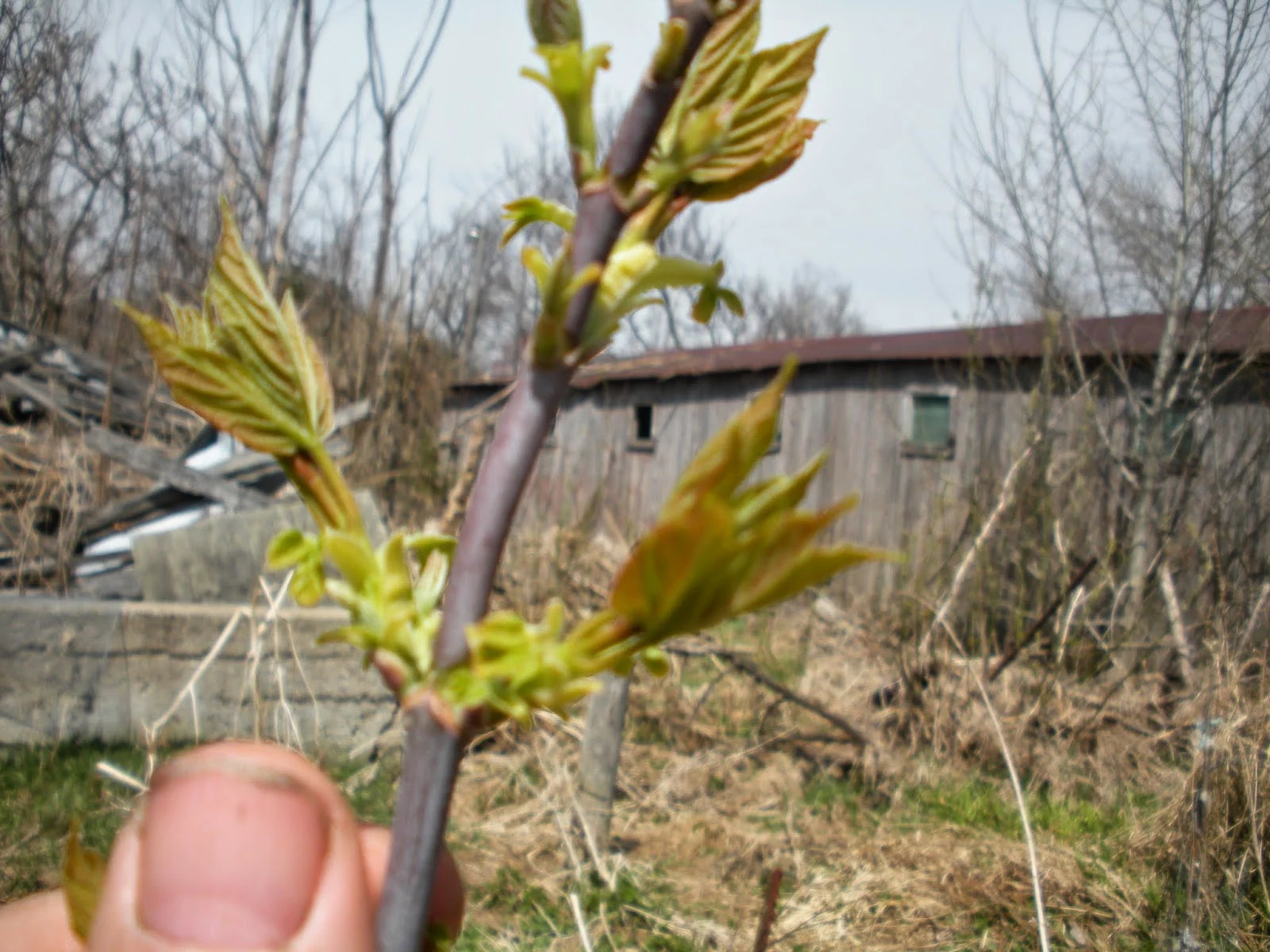The math and biology of planting potatoes
This is the earliest I ever planted potatoes. My potato patch this year is in a very favorable spot. It has elevation and gentle slope. The soil is dark and warms quickly.
I see that we have a weather system blowing in. There is a significant chance of rain for the next four days. It will be a week before I can get back on the garden. One must respect the limitations of biological systems. I need three dry days after a significant rain before I can rototill my soil. That is a simple biological fact.
Plants do not read calendars. They develop based on the accumulation of warmth. A few hot days will push development as much as a few weeks of cool weather. Scientists use Growing Degree Days to quantify the accumulation of warmth.
Gardeners will often use easy-to-observe biological markers the same way.
 |
| Daffodils in full bloom |
 |
| Dead nettle (Lamiun purpureum) in bloom. |
 |
| Box Elder (Acer negundo) shoots approximately two inches long |
 |
| Burdock (Arctium lappa) leaves slightly smaller than the size of a man's hand |
 |
| Stinging Nettle (Urtia dioica) shoots between two and six inches tall. |
Planning
All planning is, necessarily, based on approximations. Two common techniques are to use "averages" and then to add some "cushion" (typically 25%) to the final number to provide some forgiveness in the event of boo-boos. Another technique is to alternate optimistic and pessimistic estimates of parameters.
One pound of seed potato will plant about 10 feet of row (1kg will plant about 7m of row).
Plant spacing within the row profoundly impacts tuber size. Seed potatoes for baby red-skin boilers are planted very close together. Mega sized russet potato-bar potatoes are planted much, much further apart. Assuming you have the ability to water, one seed potato every twelve inches (1 every 300mm) is a good starting point.
A foot of row can be expected to produce one pound of potatoes. You might get twice as much but that means you were never late on irrigating the garden and you were perfect in your fertilizer, timing, plant spacing etc.
So a fifty pound bag of seed potatoes can be expected to plant 500 feet (150m) of row. That 500 feet of row will likely produce 500 pounds (225kg) of potatoes.
If you had to live on just potatoes, you would need to eat about 4.5 pounds of potatoes a day to receive 2200 Calories per day. So, in very round numbers, you would need to plant 170 pounds of seed potatoes (1700 feet of row) per person. If you planned to supply 25% of your calories with potatoes that would scale to about 40 pounds of seed potatoes and 400 feet of row per person.
 |
| Tape (orange) is wrapped around the tool handle to make measuring row-to-row distance a snap. I wrapped tape on both the spade handle and the hoe (leaning against far fence) handle. |
Potatoes are cultivation intensive. It is necessary to till between the rows and scrape the loose dirt over the growing tubers with a hoe. That suggests that one must either be very generous in row spacing so the rototiller does not wipe out the growing tubers or one must make accommodations for removing sets of tines from the tiller as the tuber size increases as the season progresses.
Being a lover of round numbers, I went with 39.37 inches for my row-to-row distance this year. I have used 42 inches (very generous) and 36 inches (a bit snug) in the past.
 |
| Picture showing seed potatoes before being covered up. |
Seed potatoes come in many different sizes. I cut mine to a little smaller than 2 ounces (50 grams). That is a bit smaller than a golf ball. I let them dry on sacking or pavement until the cut surfaces are no longer wet to touch. This seed is planted with the tops of the pieces approximately 1.5 inches (40mm) below ground level.
I was able to get about 600 feet of row out of my bag of Spartan Splash seed potatoes. And that was after dipping about 10 pounds out for my sister's garden.
As stated earlier, all planning is based upon approximations. It is good to have the seed go further than planned (smile).
It is typical to have seed run out in the middle of the row. My recovery plan is to plant onion sets to finish the row Onion sets and broccoli transplants make great biological row markers for seeds that are slow starters. Not only are they very visible but they are edible.
how to grow potatoes ,
ReplyDeleteI'm on blogcation. One of the things I do while on vacation is read your blog.
We grow sweet potatoes much the same way you grow your potatoes.
We've been experiencing the heat wave here too with people, including our two grandkids getting sick from stroke. But the rain is here now, so things are cooling down.
Happy farming, and all the best with those plantings.